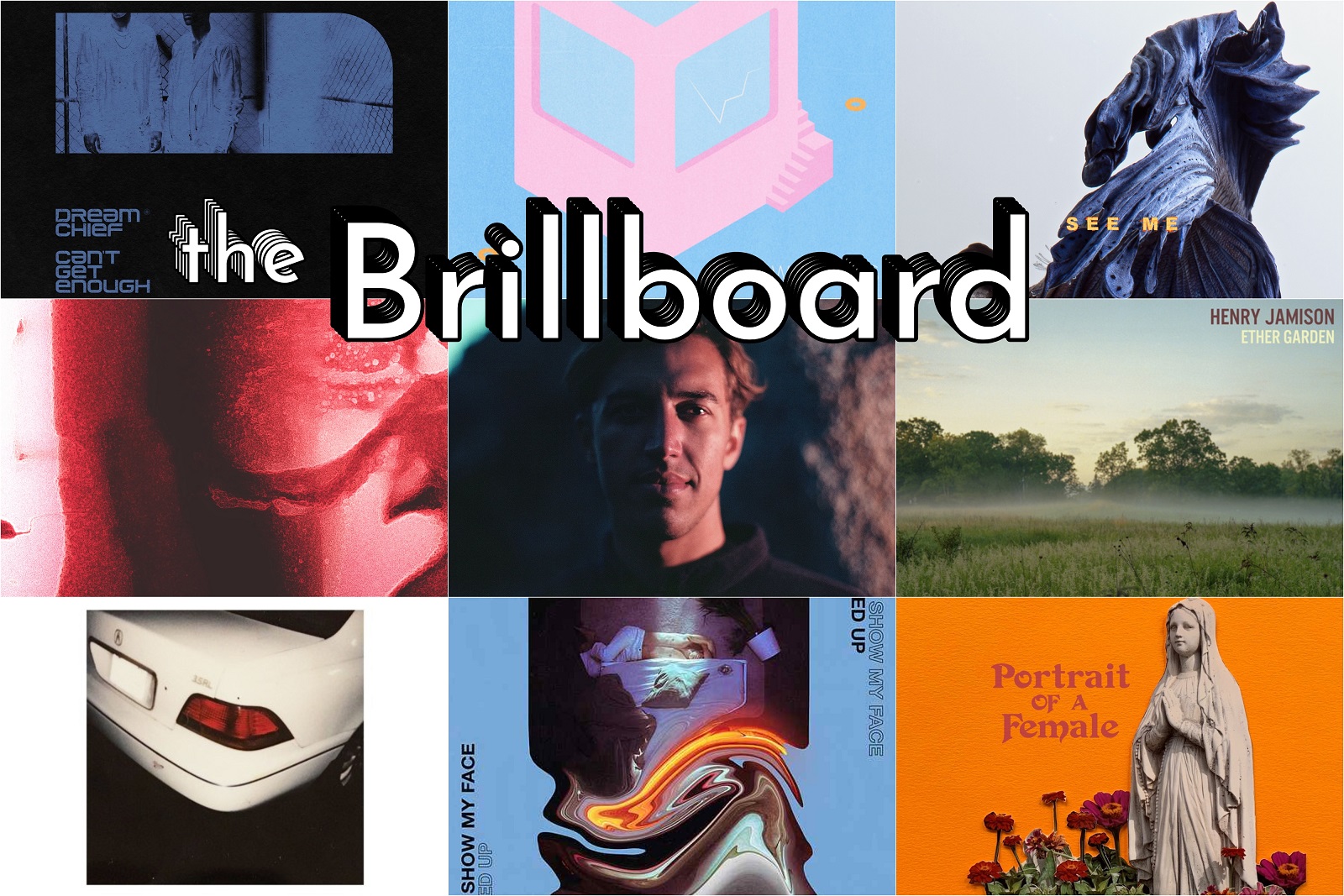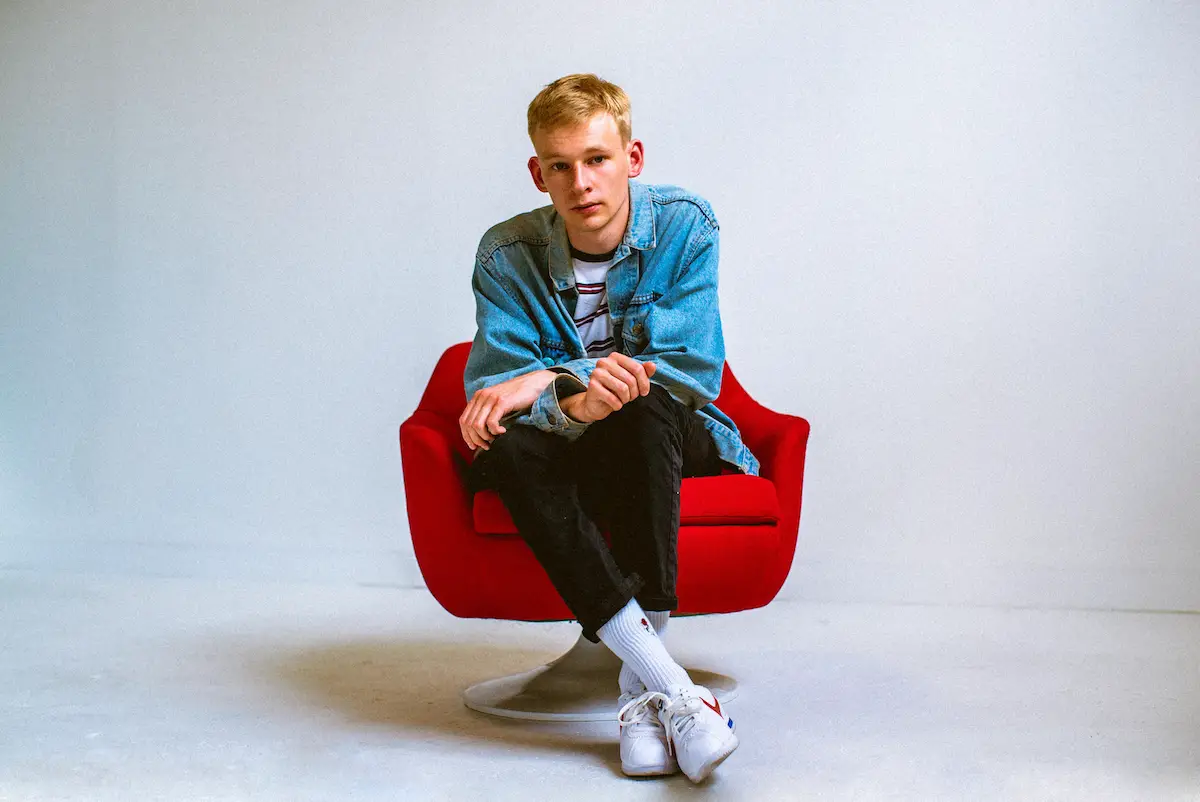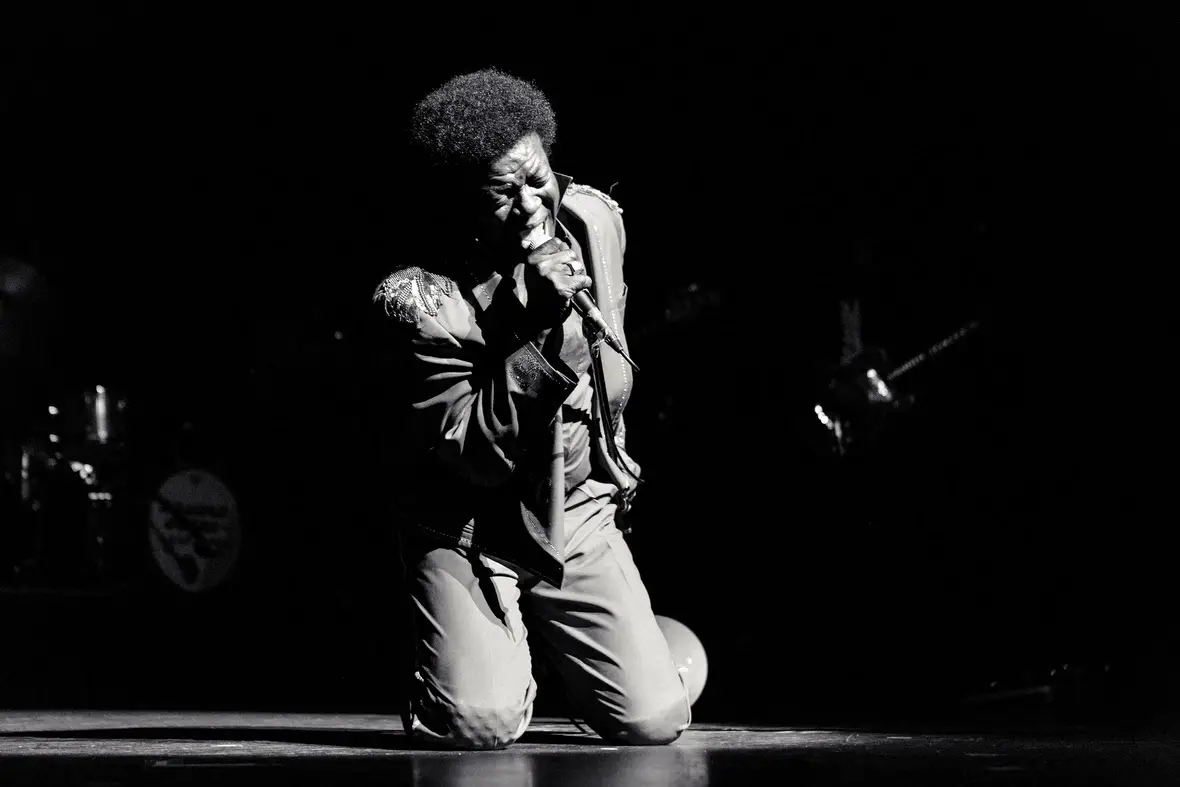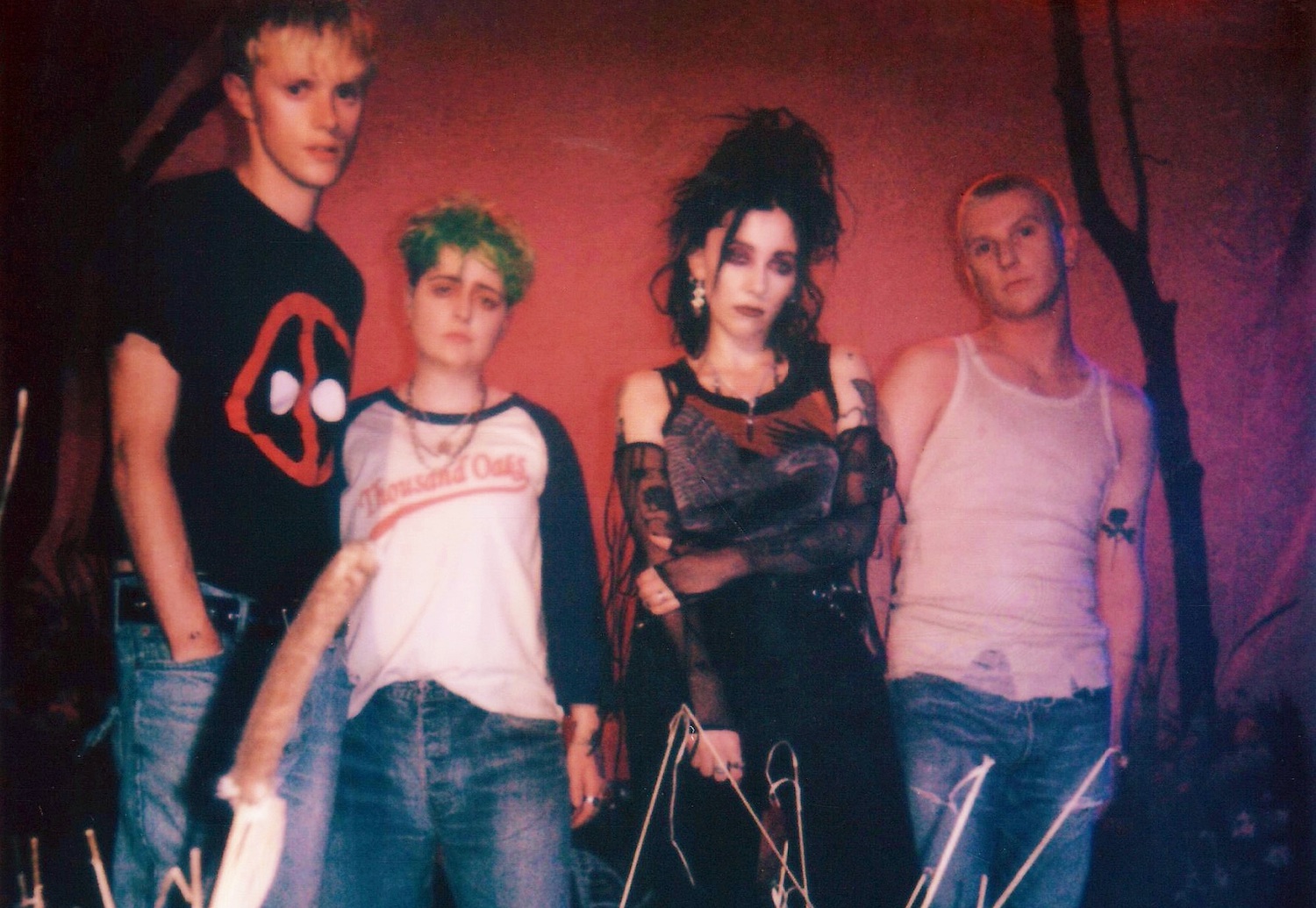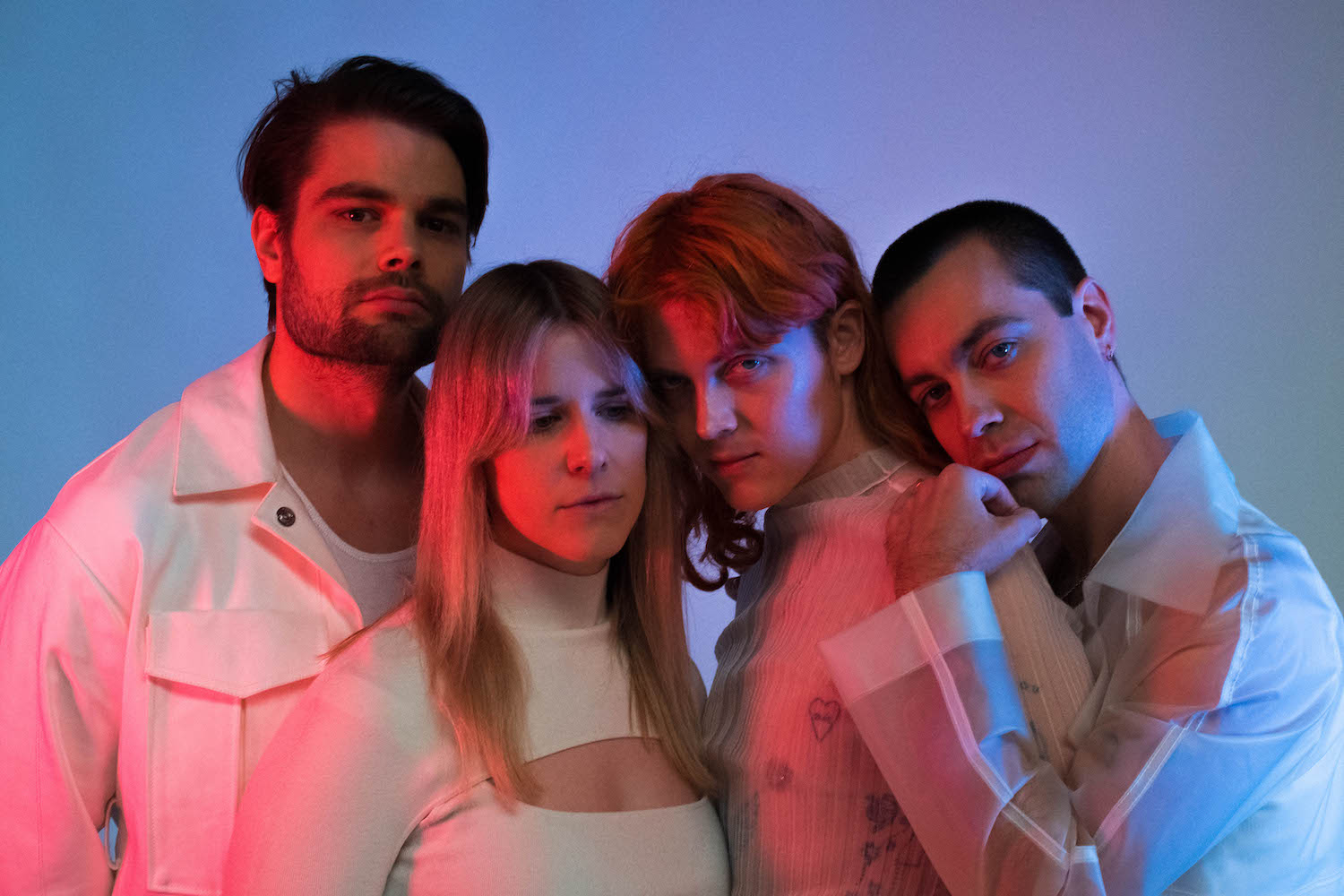Raynes’ “Come My Way” and their distinctive brand of feel-good folk are helping us get through quarantine.
— —
Raynes, made up of Mat Charley, Joe Berger, and Mark Race, is a geographically unlikely trio. North Dakota natives Charley and Berger and Brit Race come together to craft stunning harmonies, compelling folk melodies, and unique instrumentation to build a style best described as “expensive folk.” Their latest single “Come My Way” highlights the band’s eclectic sonic zest with sounds ranging from violins and mandolins to striking electro synths.

The track is a narration of the deep love you share for someone and listeners are sure to be uplifted by this feel-good anthem. Berger reveals, “There’s something of an ‘us against the world’ quality to it, naive and young and probably foolish, but motivated by nothing but love.” Galvanized by their love of not only folk but world music, “Come My Way” also features other unique instruments including taikos, toms, and shakers. The third single from the band is their personal favorite to date.
Raynes burst onto the scene just a year ago with their debut release “Lemon Drop” and soon followed with “Second Thought.” Both releases received critical acclaim and they soon followed suit with a tour throughout the U.K. The three-piece promises much more music to come, unveiling a series of singles this year.
Atwood Magazine spoke to Raynes on everything from the inspiration behind their latest single, how they are keeping busy during self-isolation, their playlist suggestions, and more!
Listen: “Come My Way” – Raynes
A CONVERSATION WITH RAYNES
Atwood Magazine: I understand Raynes is a trio comprised of two Americans and a Brit. How did you form as a band and how have your diverse backgrounds influenced your music?
Raynes: To make a long story a little shorter, two of us—Joe and Mat—started playing music together after we met at university about five years ago. Mat had a ton of songs he had written and we knew we wanted to start something together.
We started trying to find a singer and found the proverbial needle in the haystack when we came across a video of Mark singing on Instagram. We messaged him and asked if he wanted to be in a band in LA, and within ten days he was on a plane to the US to meet us. We clicked instantly, and the rest, as they say, is history.
Musically, we all come from pretty different backgrounds––Mark’s always been into bluesy guitar-based music like John Mayer, Mat grew up playing in orchestras and bluegrass bands, and Joe spent a lot of his childhood wanting to be Michael Jackson. So right from the beginning, there were a lot of different musical elements that we naturally incorporated into our collective sound.
You’ve released your single “Come My Way,” bursting with infectious energy it’s a heartfelt ode to the one you love. What was your creative process in constructing this cinematic track?
Raynes: “Come My Way” is a special song for us because it’s the very first one we ever wrote together. The process of turning it from a song into an actual record actually took a few years––the lyrics were written and rewritten, the tempo changed, and we ended up with a handful of different demo versions.
What really made it come alive, ultimately, was simply playing it live. When we stripped it to its core elements of an acoustic guitar, a violin, and three voices, it somehow sounded more uplifting and energetic than anything we had recorded. Once we realized this, we just had our producer set up a mic in his studio and tracked a live version in one take so we could keep referring back to that energy as we built the track.
The watchword for the record was definitely “cinematic.” From the beginning, we had imagined massive taikos and toms and big gang vocals, and we knew the rest of the track needed to support those elements. We added all kinds of little details that we thought would accomplish that goal––little synth sequences that evoke birdsong, African shakers and percussion, and a Celtic-feeling violin riff in the post-chorus that echoes the melody of the chorus. We sort of just put all our favorite things into it and kept what worked, which, somewhat surprisingly, was most of it.
Watch: “Prelude” – Alexandra Stréliski
So your signature sound of anthemic choruses and folk arrangements has been deemed as “expensive folk.” Can you explain this term in more detail?
Raynes: We started calling it expensive folk after getting asked so many times what kind of music we played. We never had a very good or precise answer, so we figured the best way to sum it up was to call it expensive folk. The sonic core of our sound has always been built around acoustic instruments––acoustic guitars, mandolins, and violins, as well as some more exotic folk instruments like the bouzouki.
But because our songs are essentially pop songs, we like to add synths and more modern-sounding drum sounds as well. Our melodies, especially, are far more pop than folk, which is another big reason we don’t really fit neatly into the folk genre. So, more or less, ”expensive folk” is folk instruments playing pop riffs and melodies, layered in a relatively sophisticated way and glossed up with modern pop production.
What first drew you to folk music and incorporating that genre as part of your sound?
Raynes: Incorporating folk music into our sound wasn’t really a conscious choice that we made. A big part of it was simply the instruments that we all played when we started the band––Joe had spent years just focusing on the acoustic guitar, and Mat played half a dozen folk instruments. As we started playing and writing together, we realized that there were so many things that could be done with, for example, a violin or a mandolin or a bouzouki to make our songs really unique and fresh.
Another factor is that we often perform as a trio, with no backing band, and it’s important to us that the songs sound good with just two guitars, a violin or a mandolin, and three voices. All of this is just to say that, right now, incorporating folk elements into our music is the most natural thing for us.
Fusing piano, synths, and drums along with acoustic guitars and mandolins, your music creates a rare quality. What instruments are you most drawn to and how do you find the perfect pairings?
Raynes: Something that’s deeply important to us is creating that fusion in a way that’s cohesive and coherent and not gimmicky; we never want to add a violin riff to a song just for the sake of adding a violin riff. We’ve found that there is a lot that can be done to create atmosphere and texture with instruments that a lot of artists mightn’t normally use––for example, a bouzouki in an open-tuning function much like a synth pad might, as does an accordion drone or a single organ tone.
So a lot of building a song, building a track, is starting with our instruments as foundational rather than supplemental. As far as particular instruments that we’re drawn to, there isn’t really one answer. We’re drawn to all of them, really, and having so many at our disposal makes it much easier to experiment and find which ones go well together and in which ways.
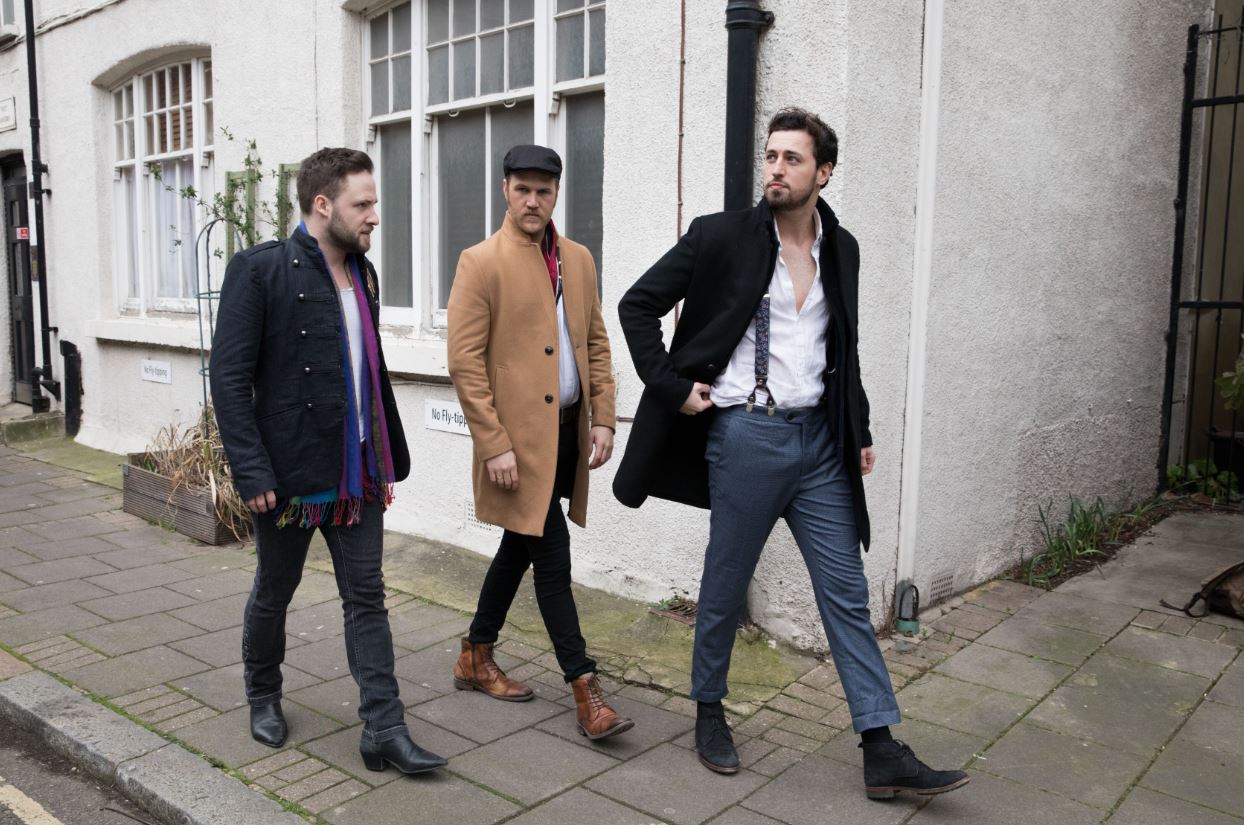
Many of your songs touch on philosophical themes inspired by Bible stories, Greek myths, and historical events. Can you tell us about your favorite themes and how they are reflected in your music?
Raynes: This is a good question. And a tough question to answer clearly. The stories and myths all serve more as a framework to explore certain ideas or emotions than as ends in themselves––for example, we have a song that sort of “takes place,” lyrically, during the bombing of a city in WWII, and draws from biblical language and imagery to become sort of a Psalm 13 Volume 2.
Its theme, though, can be reduced to simple concepts: fear, confusion, and abandonment. Mat writes the lyrics for all of our songs, and they tend to focus a lot on longing, on confusion, and on the tension between despair and hope. Because of the inherent “lightness” of our sound, there’s a lot of room to explore darker themes without ending on a note of misery; we hope there’s a ray of light in every song we write.
We’ve discussed your own music, but what is some of the music on your current playlist that you can recommend to our listeners?
Raynes: It’s hard to narrow this answer down, but we’ll give it a shot. There’s an artist named Loyal Lobos who released a song called “Criminals” a while ago that we’ve all listened to probably hundreds of times. Phenomenal song. We’re big Lennon Stella fans. Sam Fischer is doing some really excellent work. Fountains of Wayne’s album “Welcome Interstate Managers” still holds up––some of the best pop writing of the 2000s is on there. Jenny Lewis’s new stuff is incredible, as usual.
There’s a song called “Fai Rumore” by Diodato that was going to be Italy’s Eurovision submission before it was cancelled. It’s a beautiful song. Finally, we’d recommend that you go to YouTube and listen to the isolated harmonies of the Beach Boys records if you want your mind blown. Brian Wilson was doing things in the 60s that no one has done since and it all still sounds as brilliant now as it did then.
How did the band come up with the name Raynes? Is there a special meaning behind it?
Raynes: When we were deciding what to call ourselves, we were looking for a single word that didn’t really have any prior associations so that we could make the name mean whatever we wanted so that we could shape its associations and connotations. We came up with a list of hundreds, but none of them felt exactly right. Finally, we came up with Raynes, which seemed like a big enough and “free” enough word that we could make it mean whatever we wanted.
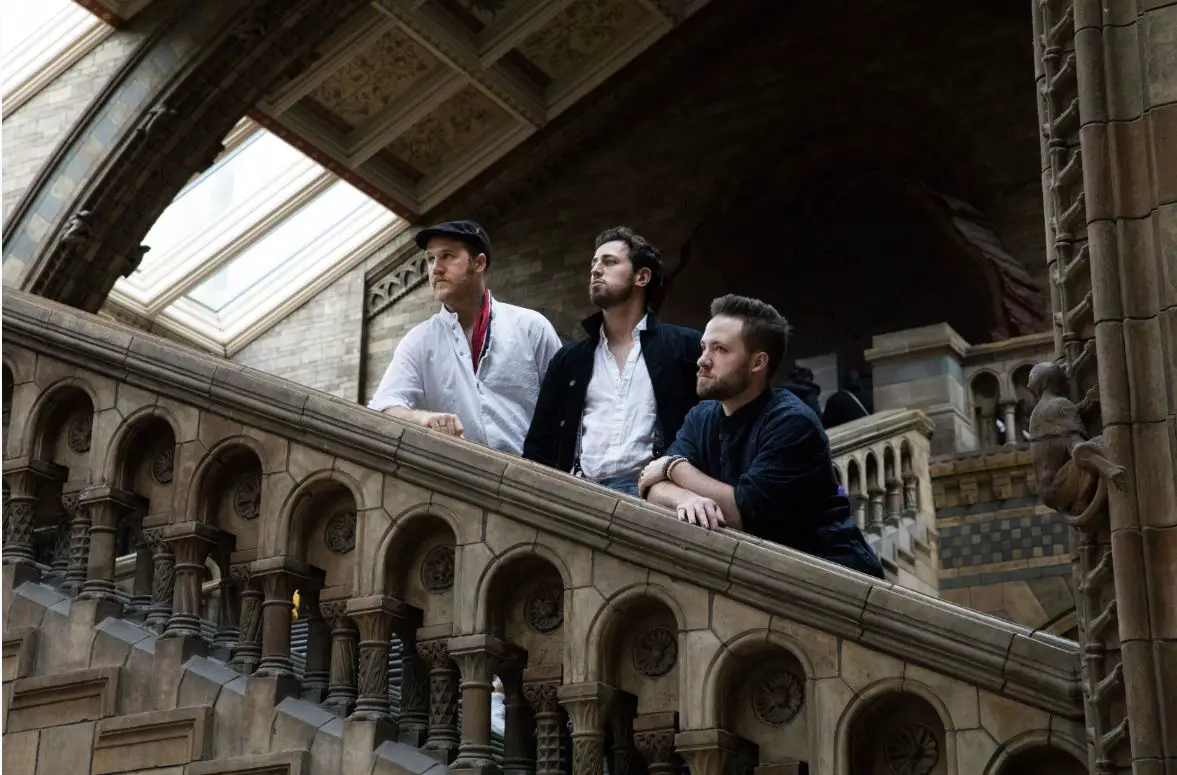
With the global crisis we’re facing, self-isolation has been tough on many of us. What is the band doing in this time of quarantine?
Raynes: Yeah, this is really a difficult time for a lot of people. It’s been rough for us because we had to cut our time in the UK short and now Joe and Mat are back in the states without Mark, which makes it much harder to do things like virtual concerts and things like that. Fortunately, we’re no strangers to being apart, so even though things definitely aren’t business as usual, we’re still writing and producing across the ocean like we have in the past. We consider ourselves very lucky to know that, at the very least, we can continue to do at least some of what we love, especially when so many others have no such guarantee.
Finally, what does the future look like for Raynes?
Raynes: Well, to know that, we’d have to know what the future looks like for the entire planet! Assuming that the world returns to some kind of stability and normalcy at some point in the not-too-distant future, we hope to come out of this ready to pick up where we left off.
Before this crisis, we were in the process of developing our live show and rehearsing with a full backing band, and we’d love to be able to tour and perform more and more. We also have dozens of songs that we’re hoping to record, and we’ll no doubt have many more by the end of this. It’s a very strange feeling, just waiting for the world to start turning again, but we plan to be ready when it finally does.
— —

Connect to Raynes on
Facebook, Twitter, Instagram
Discover new music on Atwood Magazine
? © Lenita Visan
:: Stream Raynes ::


